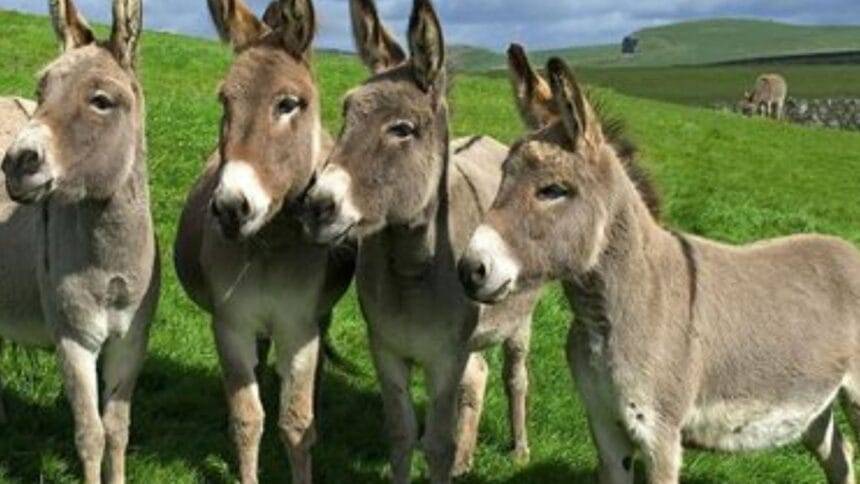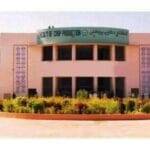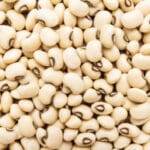Main Points In Hindi (मुख्य बातें – हिंदी में)
-
घुड़सवारी और व्यापार: गधे, घोड़े और खच्चर विभिन्न उद्देश्यों के लिए उपयोग किए जाते हैं, और घोड़ों की विभिन्न नस्लें विभिन्न कार्यों के लिए निर्धारित होती हैं, जैसे कि पोलो और बाधाओं में दौड़ने के लिए।
-
पीरोप्लास्मोसिस बीमारी: यह बीमारी, जो बैबेसिया कैबली और थाइलेरिया एक्वी प्रोटो जोआनों द्वारा उत्पन्न होती है, घोड़ों, गधों और खच्चरों के लिए गंभीर खतरा पैदा करती है, जो उनकी स्वास्थ्य को नुकसान पहुंचाने के साथ-साथ व्यापार को भी रोकती है।
-
राष्ट्रीय इक्वीन रिसर्च सेंटर, हिसार: इस केंद्र को विश्व पशु स्वास्थ्य संगठन (WOAH) द्वारा मान्यता प्राप्त है और यह पीरोप्लास्मोसिस जैसी बीमारियों का परीक्षण और शोध कर सकेगा, जिससे व्यापार में रुकावट कम होगी।
-
नई तकनीक और उपकरण: NRC इक्वीन ने पीरोप्लास्मोसिस के लिए उन्नत परीक्षण उपकरण और तकनीकें विकसित की हैं, जैसे कि ELISA और PCR, जो जानवरों के स्वास्थ्य की बेहतर निगरानी और उपचार में मदद करेंगी।
- भारत में घोड़ों की जनसंख्या: भारत में लगभग 5.5 लाख घोड़े (घोड़े, पोनी, गधे, खच्चर) हैं, जिसमें उत्तर प्रदेश, राजस्थान, गुजरात और हरियाणा में सबसे अधिक संख्या है।
Main Points In English(मुख्य बातें – अंग्रेज़ी में)
Here are the main points of the provided text:
-
Diverse Uses and Trade: Donkeys, horses, and mules serve various purposes, with specific breeds designated for tasks like polo or obstacle courses. The trade in these animals is significant, but it can be severely impacted by outbreaks of certain diseases.
-
Piroplasmosis Disease: Equine piroplasmosis, caused by tick-borne protozoan parasites, is a serious disease affecting horses, donkeys, and mules. It poses health risks to the animals and leads to financial losses due to restrictions on trade and movement.
-
Accreditation of NRC Equine: The National Equine Research Centre (ICAR-NRC Equine) in Hisar has been accredited by the World Organization for Animal Health (WOAH). This accreditation allows the lab to conduct testing and research on piroplasmosis, enhancing the control and treatment of the disease.
-
Advanced Testing Facilities: NRC Equine has developed state-of-the-art testing methods for diagnosing piroplasmosis, including various ELISA tests and PCR techniques, aimed at early detection and management of the disease.
- National Context: NRC Equine is the fourth laboratory in India’s animal husbandry sector to receive WOAH accreditation, reflecting the country’s commitment to improving equine health. India has a significant population of equines, concentrated mainly in states like Uttar Pradesh, Rajasthan, Gujarat, and Haryana.


Complete News In Hindi(पूरी खबर – हिंदी में)
गधे, घोड़े और खच्चर कई कामों के लिए उपयोग किए जाते हैं। खास कर घोड़ों के मामले में, हर कार्य के लिए उनके अलग-अलग नस्लें होती हैं। जैसे कि पोलो खेल में उपयोग किए जाने वाले घोड़ों की नस्ल अलग होती है, जबकि बाधा प्रदर्शन में प्रसिद्ध घोड़ों की नस्ल अलग होती है। विशेषज्ञों के अनुसार, गधों, घोड़ों और खच्चरों का व्यापार करोड़ों रुपये का है। लेकिन जब कुछ बिमारियों के बारे में खबर फैलती है, तो यह व्यापार पूरी तरह से ठप हो जाता है। और सबसे चिंताजनक बात यह है कि व्यापार के दौरान हर लैब की रिपोर्ट पर विचार नहीं किया जाता है।
लेकिन अब हमें इस समस्या से छुटकारा मिल गया है। राष्ट्रीय घोड़ा अनुसंधान केंद्र, हिसार (ICAR-NRC Equine) को विश्व पशु स्वास्थ्य संगठन (WOAH) द्वारा मान्यता प्राप्त है। अब हिसार की यह लैब गधों, घोड़ों और खच्चरों में होने वाली बीमारी पिरोप्लास्मोसिस का परीक्षण कर सकेगी। इस बीमारी पर शोध भी किया जाएगा। यह बीमारी तीनों प्रकार के जानवरों के लिए बेहद खतरनाक मानी जाती है।
अधिक पढ़ें: चारागाह: अजोल्ला तैयार करते समय इन 13 बातें ध्यान में रखें, कोई हानि नहीं होगी।
पिरोप्लास्मोसिस बीमारी के बारे में जानें
घोड़े की पिरोप्लास्मोसिस एक बीमारी है जो कि टिड्डों से फैलने वाले प्रोटोज़ोआ परजीवियों बाबेसिया कैबली और थेलेरिया एक्वी द्वारा होती है। यह खास तौर पर घोड़ों, गधों, खच्चरों और ज़ेब्रा को प्रभावित करती है। यह बीमारी न केवल जानवरों के स्वास्थ्य के लिए गंभीर खतरा है, बल्कि व्यापार ठप होने के कारण आर्थिक नुकसान भी करती है। भारत में इस बीमारी की सेरो प्राविलेंस दर 15 से 25 प्रतिशत है और कुछ उच्च जोखिम वाले क्षेत्रों में यह 40 प्रतिशत तक पहुंच जाती है। इसका असर यह होता है कि जानवरों की उत्पादकता कम हो जाती है, स्वास्थ्य बिगड़ता है और घोड़ों के आंदोलन और निर्यात पर रोक लग जाती है।
यह बताना महत्वपूर्ण है कि कठोर नियंत्रण और जल्दी उपचार की आवश्यकता को पहचानते हुए, DAHD ने NRC Equine को भारत के घोड़ा रोगों का राष्ट्रीय केंद्र घोषित किया और संस्थान ने घोड़ी पिरोप्लास्मोसिस के लिए अत्याधुनिक उपचार उपकरण विकसित किए हैं। जिनमें पुनः संयोजक एंटीजन आधारित ELISA, प्रत्यक्ष फ्लोरेसेंट एंटीबॉडी परीक्षण, प्रतिस्पर्धात्मक ELISA एंटीबॉडी पहचान के लिए और रक्त धब्बा परीक्षण, MASP इन-विट्रो संस्कृति प्रणाली और एंटीजन पहचान के लिए PCR शामिल हैं।
अधिक पढ़ें: टूना मछली: अंडमान और निकोबार द्वीप समूह बन रहे हैं टूना मछली के क्लस्टर, मछुआरों की स्थिति बदलेगी, जानें कैसे
यह WOAH से मान्यता प्राप्त चौथी लैब है
NRC Equine भारत के पशुपालन क्षेत्र की चौथी लैब है जिसे WOAH द्वारा मान्यता प्राप्त हुई है। पहले, कर्नाटका विश्वविद्यालय के पशु चिकित्सा महाविद्यालय, बैंगलोर को रेबीज के परीक्षण के लिए WOAH से मान्यता मिली थी, तथा राष्ट्रीय पशु चिकित्सा महामारी विज्ञान और रोग जानकारी संस्थान, बैंगलोर को PPR और लेप्टोस्पायरोसिस परीक्षण के लिए मान्यता मिली थी। जानवरों के विशेषज्ञों के अनुसार, 20वें पशुधन जनगणना के अनुसार, भारत में लगभग 5.5 लाख घोड़े (घोड़े, पोनी, गधा, खच्चर) हैं। इस जनसंख्या में लगभग 3.5 लाख घोड़े और पोनी, 1.20 लाख गधे और 80 हजार खच्चर शामिल हैं। ये अधिकतर उत्तर प्रदेश, राजस्थान, गुजरात और हरियाणा में पाए जाते हैं।
Complete News In English(पूरी खबर – अंग्रेज़ी में)
Donkeys, horses and mules are used for many purposes. Especially in horses, the breed is already marked for each task. For example, the horses used in polo game are of a different breed, whereas the horses that show their agility in obstacle are of a different breed. According to experts, there is a business of buying and selling of donkeys, horses and mules worth crores of rupees. But as soon as the news of certain diseases spreads, this business comes to a complete halt. And the disturbing thing is that not every lab report is considered during trading.
But now we have got rid of this problem. National Equine Research Centre, Hisar (ICAR-NRC Equine) has been accredited by the World Organization for Animal Health (WOAH). Now this lab of Hisar will be able to test the disease piroplasmosis occurring in donkeys, horses and mules. There will also be research on this disease. This disease is considered very dangerous for all three types of animals.
Also read: Fodder: While preparing Azolla, keep these 13 things in mind, there will be no harm.
Know what is Piroplasmosis disease of donkeys and horses
Equine piroplasmosis is a disease caused by the tick-borne protozoan parasites Babesia caballi and Theileria equi. It especially attacks horses, donkeys, mules and zebras. This disease not only poses a serious threat to the health of the animals, but also causes financial loss due to stoppage of trade. The sero prevalence rate of this disease in India is 15 to 25 percent. Whereas in some high-risk areas it reaches up to 40 percent. Its effect is that the productivity of animals decreases, health deteriorates and there is a ban on the movement and export of horses.
Notably, recognizing the need for strict control and early treatment, DAHD prioritized NRC Equine as India’s national center for equine diseases and the institute developed state-of-the-art treatment equipment for equine piroplasmosis. Developed recombinant antigen based ELISA, indirect fluorescent antibody test, competitive ELISA for antibody detection and blood smear test, MASP in-vitro culture system and PCR for antigen detection.
Also read: Tuna Fish: Andaman and Nicobar Islands become Tuna Fish Cluster, the conditions of fishermen will change, know how
This is the fourth lab to get recognition from WOAH
NRC Equine is the fourth lab in India’s animal husbandry sector to get its lab accredited by WOAH. Earlier, the College of Veterinary Medicine, Karnataka University of Veterinary Animal and Fisheries Sciences, Bangalore has received recognition from WOAH for testing rabies, National Institute of Veterinary Epidemiology and Disease Informatics, Bangalore for testing PPR and leptospirosis disease. According to animal experts, according to the 20th livestock census, there are about 5.5 lakh horses (horses, ponies, donkeys, mules) in India. This population includes about 3.5 lakh horses and ponies, 1.20 lakh donkeys and 80 thousand mules. These are maximum in Uttar Pradesh, Rajasthan, Gujarat and Haryana.








